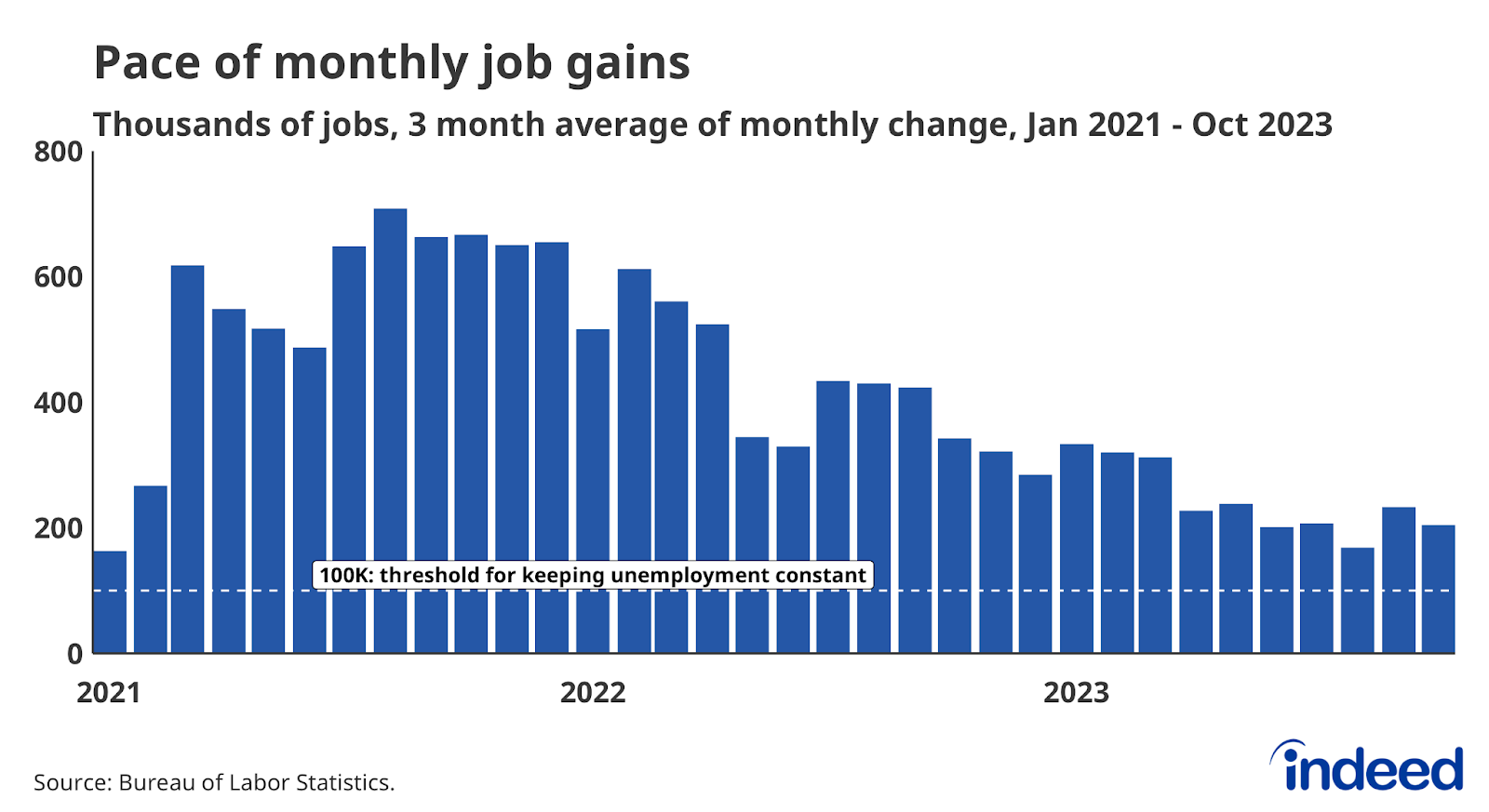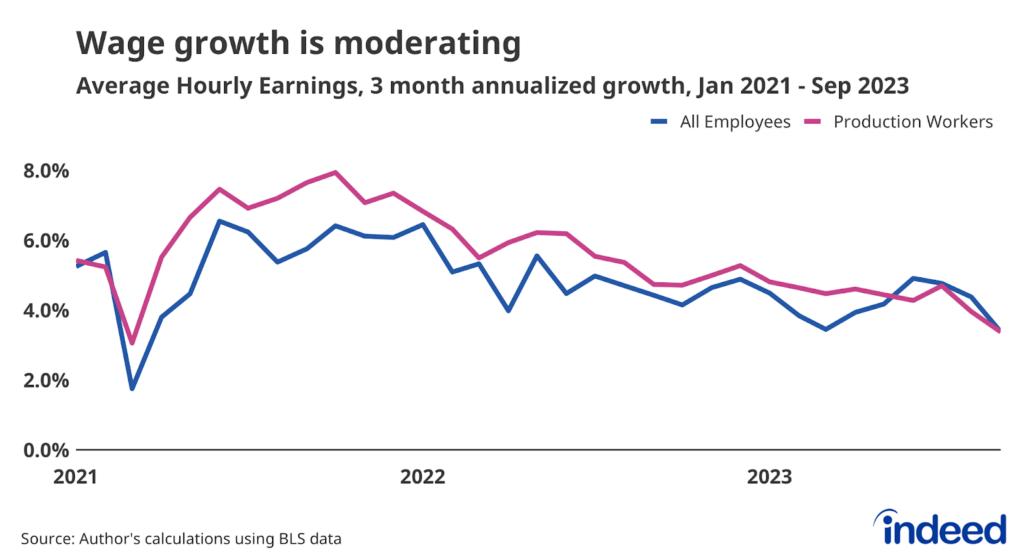Key Points:
- Employers added 150,000 new jobs in October, but that understates the true strength of hiring as the UAW strike reduced jobs in the manufacturing sector. Jobs in that industry will jump next month when striking workers return.
- The unemployment rate rose to 3.9% in October, the highest rate since early 2022. The rising trend in the unemployment rate is worth keeping an eye on, but no one should panic yet.
- The labor market continues to cool down but there’s a bit more uncertainty than in the recent past about how quickly the temperature might drop.
Today’s jobs report is consistent with both a mild loosening of the labor market on the way to a soft landing, and potentially the beginning of a more troubling downturn. But it’s important not to overreact. Patience is the order of the day.
Payrolls are still growing at a solid clip, and the impact of thousands of striking workers likely understates the headline 150,000 jobs added in October. Wage growth continues to slow, but remains robust by pre-pandemic standards. But the household survey is starting to flash some warning signs. The unemployment rate has been steadily creeping up since the spring, and further increases from this point may begin to trip some recessionary alarm bells. Concerns over the past few months have been centered around the threat of a strengthening job market; this month’s report shows that we might want to start being more alert to the possibility of some weakness.
Employers are still adding jobs at a solid pace according to the payroll survey. Private sector employers added 153,000 jobs a month on average from August through October. But the underlying momentum of hiring might be even stronger than that. Adjusting for the impacts of the UAW strike by adding back the motor vehicles and parts jobs lost in October, the three-month average rises to 164,000 jobs. That’s a pace of gains well above what we need to keep up with population growth, which is around 100,000 jobs a month.
But while those gains would suggest that unemployment is holding steady, the unemployment rate crept up again. This month’s uptick can’t be waived off as a one-month aberration; it’s a trend now. The rise in unemployment is concentrated among workers who recently lost their jobs and the job finding rate of unemployed workers ticked down. Perhaps this rise is just a sign that the extraordinarily tight labor market of recent years is loosening. But continued upward momentum would be troubling, and hopefully this recent rise levels off as the labor market recovery continues.
Anyone concerned that the labor market was heating back up should be reassured. This labor market is still cooling down, with slowing payroll gains and solid if unspectacular wage growth. The recent rise in unemployment is worth monitoring, but not yet panic-worthy. The Federal Reserve is taking a “wait and see” approach with the labor market, and that view seems even more appropriate this morning.



